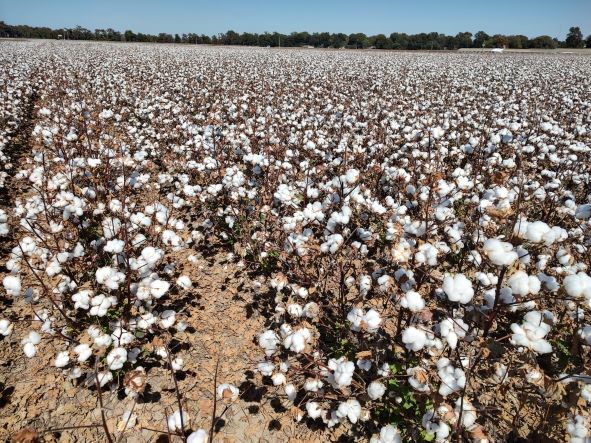Back to Basics Which Fiber Will Win? The One with Better Marketing
If the pen is truly mightier than the sword, all fibers – both natural and synthetic – would be wise to start polishing their communications skills. Cotton and synthetics have been battling for market share for decades, and victory or defeat might ultimately come down to which fiber is better at marketing.
That’s the opinion of Mark Messura, senior vice president of global supply chain marketing with Cotton Incorporated. The market is price-sensitive, particularly in emerging economies, which makes good messaging an even more critical success factor.
Natural and synthetic fibers each have their own individual strengths and drawbacks, but when it comes to having a positive image in the minds of consumers, synthetics face an uphill battle, according to Messura. “Polyester, in particular, carries a bit of a negative connotation to the marketplace,” he said. “There actually seems to be a movement toward referring to it as a ‘microfiber’ to make it more acceptable to consumers.”
In terms of consumer appeal, cotton is viewed as more comfortable than polyester and nylon, as well as other synthetic fibers such as olefin, acrylic and acetate. Cotton absorbs perspiration more quickly and has more breathability. It’s also more sensitive to the skin, making it the most logical choice for undergarments and apparel for infants. A fact that surprises many people is that cotton is the better option for engineering, Messura says, because its fibers are tightly interlocked for durability.
On the other hand, synthetic fibers are much stronger. The logical assumption is that by using both fibers together, the user would get the best of both worlds.
Sadly, it’s not that easy. “If you simply blend cotton with synthetics, you don’t sell as much fiber,” Messura says. “In addition, it’s not always technically feasible to blend fibers. You can’t dye them as easily, for one, and economics play a major role. Polyester is thought to be cheaper, but prices for garments made of cotton and polyester aren’t much different.”
All blended fibers must be rinsed, which consumes both water and energy. Also, there is fall-out from the rinsing of fibers, and in a world with increasing ecological concerns, that consumption carries a negative connotation among consumers.
Money Is Not the Object
Cotton prices in 2011 have been moderating, especially compared with the massive spike in 2010. According to a June report by Agrimoney.com, cotton experts have “reinforced their forecast for a return to more typical conditions in the cotton market, saying that prices will become less volatile, besides suffering a ‘significant’ decline from historically high levels.”
In the past, manufacturers of cotton and synthetics poured huge amounts of money into research and development, Messura said. Today, price points are strikingly similar for cotton and synthetic products.
“There is a high correlation among the prices for cotton, polyester and rayon, and there has been for two years now,” Messura said. “It’s greater than a 0.9 correlation.” He expects that trend to continue for the foreseeable future.
With traditional market competition in a stalemate, an increasing number of cotton professionals are making a foray into non-woven products, and there is also increasing momentum to market cotton as both a food and a fiber, which should help cotton maintain its share of acreage.
For now, though, the textile battle for consumer preference is mostly based on marketing clout.
“Cotton is a natural product, and one day consumers may have to pay more for it,” Messura says. “It requires that manufacturers produce solid marketing messages. At the end of the day, you can make a product out of anything you want … but if the consumer doesn’t want it, they won’t buy it. We all still have a bit of work to do.” •









